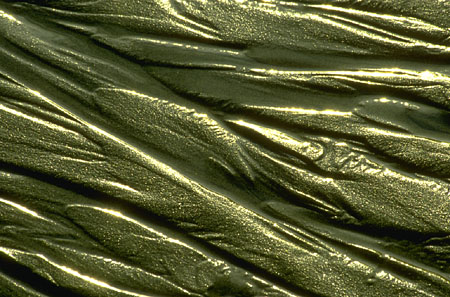LITR 5535: American
Romanticism

Sample Student Midterm 2006
Cindy Goodson
October 5, 2006
Romanticism:
Expressions of the Sublime and the Gothic
The writings of Washington Irving’s
‘The Legend of Sleepy Hollow’, and
Nathaniel Hawthorne’s ‘Young Goodman
Brown’ both exemplify narratives that tend toward classical examples of
Romanticism. And they converge in
the writings of James Fenimore Cooper’s The Last of the Mohicans.
During the American Renaissance, the period of 1820 to1860, we encountered a
movement, which included a new set of writing genres.
We were introduced to the American romantic period.
We understand through class discussions
and notes that whatever excites the
ideas of pain and danger, that is to say, whatever is in any sort
terrible or is conversant about terrible objects, or operates in a manner
analogous to terror, is a source of the sublime.
Expressions of the sublime can also be a combination of beauty and
terror, pleasure and pain. We see
an example in the portion of text that reads, “…and the warriors remembered
that their formidable and daring enemy had even been in the bosom of their
encampment, working injury, fearful
rage took the place of wonder, and all those fierce passions with which the
bosom of Magua had just been struggling, were suddenly transferred to his
companions. Some among them gnashed
their teeth in anger,” when we read texts of this sort we can relate
them to the hell writings of the Bible scriptures.
“Where there will be wailing and gnashing of teeth.”
What kind of fearful rage or emotion would cause one to gnash his own
teeth? Cooper is brilliant in
writing about fearful rage taking the place of wonder; this is clearly the
language of the sublime.
In her 2005 midterm Michelle Gooding
noted that “The gothic is often recognized by a contrast between light and
dark, spectral images, imagery of hell or decay, and the gothic color schemes
are: black, white, and red or yellow. The
black symbolizes evil or decay, the white, innocence or purity, and the
red/yellow, anger or passion. Two
of the gothic modes used in The Last of the Mohicans are the gothic space and
the gothic individual.” This is
an accurate introduction to the gothic and I would add to that definition
Cooper’s application of color schemes. For
instance, the way Cooper refers to Alice’s “....tresses……..shining and
black, like the plumage of the raven. Her
complexion was not brown, but it rather appeared charged with the colour of the
rich blood, that seemed ready to burst its bounds” is an excellent example of
gothic. Her (black) tresses, her
rich (red) blood, as it relates to her ‘not brown’ complexion, are
contrasting colors that represent gothic expression.
In ‘The Legend of Sleepy Hollow’, Irving setting is in the midst of
nature near the Hudson Bay and in his opening lines he is brilliant at
describing this scenery. He writes,
“In the bosom of one of those spacious coves which indent the eastern shore of
the Hudson....there is a little valley, or rather lap of land, among the high
hills, which is one of the quietest places
in the whole world.” This
opening is a source of the sublime in that it is a picture of a quiet place that
he suggests is larger than life. One
thing these writers have in common are the nature/wilderness settings used to
support their sublime and gothic themes. Irving
writes, “A small brook glides through it, with just a murmur enough to lull
one to repose; the occasional whistle of a quail, or tapping of a woodpecker, is
almost the only sound that ever breaks in upon the uniform tranquility.”
This is great language to typify romance in nature and the sublime.
The text says that the only sound that usually disturbs this calm of
nature is the occasional whistle of a quail or tapping of a woodpecker, but then
he shifts the scene from the romantic language of peacefulness and tranquility
and all that is good and pure in nature, to the gothic amplifications of a
haunted, enchanted region.
A shifting takes place when he writes,
“I wandered into it at noon time, when all nature is peculiarly quiet, and was
startled by the roar of my own gun, as it broke the Sabbath stillness around,
and was prolonged and reverberated by the angry echoes.”
I see a gothic personification when the angry echoes take on the
character of a being, having the ability to reason and become angry. As we read on we see the converging of the sublime with the
gothic since the Sabbath stillness and the roaring gun which are perfectly
opposites of one another, are used in the same stanza.
He fuses that which is considered good, perfect and pure, Sabbath
stillness with that which represents death, roaring guns.
Sabbath stillness; I would imagine a place of quiet serenity in
observance of a holy day, a meditative day, a day that the Bible refers to in
the Ten Commandments as a day that the children of Israel would not work, or
perform any type of labor. When we
think of guns we think of war, drive by shootings and death.
Subsequently, Sabbath is to life, as guns are to death, a great fusion of
sublime and gothic. Irving also
uses expressions of the sublime as it relates to a dreadful depiction of the
main character Ichabod Crane. He
was “a native of Connecticut….... was tall, but exceedingly lank, with
narrow shoulders, long arms and legs, hands that dangled a mile out of his
sleeves, feet that might have served for shovels, and his whole frame most
loosely hung together. His head was
small, and flat at top, with huge ears, large green glassy eyes, and a long
snipe nose, so that it looked like a weather-cock, perched upon his spindle
neck, to tell which way the wind blew.” This
description of Crane, gives recognition to Irving’s ability to create a gothic
individual. The way he uses a
gothic description of this character’s makeup creates in Crane gives him a
sort of attractiveness, which draws us to him.
The
natural landscape of Sleepy Hollow assumes the gothic functions of a castle,
especially in terms of secret hiding places or places where blood has been
spilled. The fact that the Headless
Horseman was believed to have gotten his head blown off by a cannon let’s us
know that blood was spilled here. “The
dominant spirit, however, that haunts this enchanted region, and seems to be
commander-in-chief of all the powers of the air, is the apparition of a figure
on horseback without a head.” Irving
has perfect language here to support the gothic as well as the sublime.
Gothic in the fact that we are speaking of legendary superstitions, and
he is considered the dominant spirit which again, is a source of the sublime
because it’s suggesting a larger than life simile of the position and power of
the headless ghost. The enchanted region is likened unto a haunted castle and
therefore, symbolizes the gothic and we see a converging of this enchanting in
the setting of the Mohicans. The
parties involved in the are in nature; in the wilderness, and people are
considered savages.
In ‘Young
Goodman Brown’, Nathaniel Hawthorn masterfully shifts the setting from a
sublime dialogue depicting the beautiful romantic love relationship shared
between Young Goodman Brown and his wife Faith, to an adventurous expedition of
a gothic mission through a haunted forest.
The settings converge with the other two texts concerning the haunted or
enchanted woods, nature and wilderness scenes.
The language is determined to describe the love relationship they shared
when Hawthorne writes, “Dearest heart,’ whispered she, softly and rather
sadly, when her lips close to his ear, ‘pr’y thee….a lone woman is
troubled with such dreams and such thoughts, that she’s afeard of herself,
sometimes. Pray, tarry with me this
night, dear husband, of all nights in the year!” Here, Faith is troubled
within her own mind with such dreams, which are exemplary of the gothic’s dark
spaces of one’s mind.
Hawthorne expresses the sublime
as goodman Brown finds great pleasure and resolve in justifying himself when he
writes, “With this excellent resolve for the future, Goodman Brown felt
himself justified in making more haste on his present evil purpose. He
had taken a dreary road, darkened by all the gloomiest trees in the
forest…..” He gives us the impression that the trees were particularly
gloomy just for his adventure. Ultimately,
we don’t know if this all was a bad dream or if any incantations really took
place. We do understand that the imaginations of Hawthorne’s mind
are filled with haunted spaces and he gives outstanding illustrations of fusing
the gothic and sublime language.
In conclusion, ‘The
Last of the Mohicans’ presents other areas in which James Fennimore Cooper
tends toward the romantic, in addition to those mentioned earlier.
Cooper is exceptional at incorporating the sublime, breaking barriers of
racial division and bridging that divide through historical connections.
We also witness the aesthetics of pleasure and pain throughout the
Mohican texts and he keeps us immersed in darkness and terror, fear and passion
as it relates to the gothic. For instance, the writings take place during the time of
European/American Romanticism, 1826. He
proves through the texts that the state of their union was that they were
racially divided; yet historically related.
Irving and Hawthorne’s texts converge through Mohicans in several
areas. They all lived or spent most
of their time in the wilderness in the midst of nature. They all interacted with the unknown. There is a certain degree of nostalgia as well as sublime.
A desire to want something they cannot have is present.
We see a desire and loss pattern, and a journey or quest, and both trial
and struggle.
|
|
|
|


